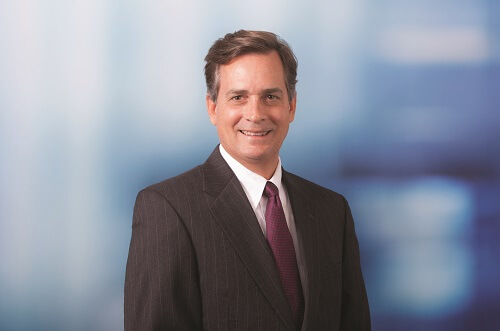Franklin Templeton portfolio manager explains the importance of alternative hedging strategies

Brooks Ritchey compared the business cycle to catching an Uber. Not in terms of shock at your end-of-month statement - those trips rack up quickly - but when it comes to planning ahead.
The Franklin Templeton senior managing director and head of portfolio construction for K2 Advisors told investors to imagine they are at a hockey game and it’s the middle of the third. That, he said, is when you need to get the app out and book your ride, not after the game when you’re waiting outside in the cold with thousands of others.
Similarly, he told WP: “Earnings growth looks like it may be slowing a bit in the first year of 2019. Clearly the central bankers want to normalise rates, so maybe it’s time to call an Uber!”
The feeling among many advisors is that alternatives, like the newly retail-available liquid alt funds, represent an effective way to protect on the downside while still capturing alpha.
Ritchey said hedging strategies are growing in popularity as investors look to combat the changing economic landscape 10 years after the global financial crisis. He said Franklin Templeton’s offshore structured funds started with $100 million and have grown to $2.5 billion, while the US versions also started at $100 million and have advanced to $1.2 billion.
Ritchey said European investors are attracted beacuse they don't like the equity market here because it’s late cycle and fully valued, while the low interest rates on the continent mean they can’t hold cash as a “holdout type of allocation”. Meanwhile, the bond markets are acting similarly because of quantitative normalisation.
He said there are many echoes of this in Canada, albeit with higher yields, and added that since the volatility in February, there have been more incoming phone calls about diversification away from equities.
Ritchey said: “It’s 10 years after the global financial crisis and all allocators, whether it’s a financial advisor, an institution, retail in general, [are thinking] what you do 10 years after the global financial crisis?
“Maybe there is another choice, maybe there is an alternative that is highly alpha driven. It’s not so much driven by rates, it’s not so much driven by equity beta; it’s really driven by the rotation that’s going on in the sectors and asset classes and the country.
“Normally when you get a rotation you get a better outlook for pure alpha, the hedge strategy alpha – that’s what we’re hearing from clients.”
However, Ritchey explained that while not driven by rates per se, there is a strong relationship between them and the performance of hedge strategies, which bodes for the next 18 months to two years as the central banks continue their hiking policy.
He said it can be explained fundamentally by the fact that as rates rise, alpha improves.
“It makes intuitive sense, as rates move higher, you basically have a wider variation of the interest rates on different corporate sectors, different countries, different currencies and different rating buckets out there.
“When rates are low like we’ve seen for most of the past 10 years, even a mediocre company or a mediocre country can survive on a very low cost of financing. And that was by design by the central bankers – they wanted to stabilize Greece, stabilize some of the global bond and equity markets out there after the global financial crisis.”
That all changed mid-December 2015 when the US Federal Reserve started to hike and, subsequently, the Bank of Canada began to follow its lead. The result: a wider gap between companies that have a higher debt-to-equity ratio and, say, technology firms that have a lot of cash and don’t mind if rates rise.
Ritchey said: “You basically see a higher dispersion in the performance of winning sectors – let’s say technology in the last year and half – versus other sectors; not only utilities but some of the higher debt-to-equity type of sectors out there.
“So that separation of performance being caused by the impact of higher interest rates, that creates an alpha opportunity cycle.”
The portfolio manager pointed to a JP Morgan study that said hedging alternative strategies should, as a starting point, take up about 10% of your portfolio, while family offices were reportedly allocating about 19% to it. The gurus of hedging strategies are going 28% or higher, said Ritchey.
He said that apart from rates, there are two other reasons for the current alpha opportunity. The first is higher volatility in the major currency markets of the world, which has an impact on different sectors in terms of their revenue growth, whether they are importers or exporters.
The other cause is changes in policy or regulation in general. Ritchey points to trade or tax policy as having various levels of impact on different sectors, again improving the chance of capturing alpha.
Ritchey said his number one goal is to avoid the sector rotation and pointed to how all the chat about co-ordinated global growth has been turned on its head as an example of why investors need to be kept informed.
He said: “I just got back from a European client trip and the buzz word is unco-ordinated global growth! The tech sector has been firing the US, the US has been driving the world in equities and if we lose tech, then we might lose the US. If we lose US equity momentum, then we might see further pressure in emerging markets and developed equity.”
He added: “My job is to try to remind people to think about three months from now, six months from now, what’s happening with Brexit, what’s happening with mid-term elections, what happens with Turkey and Saudi Arabia.”



